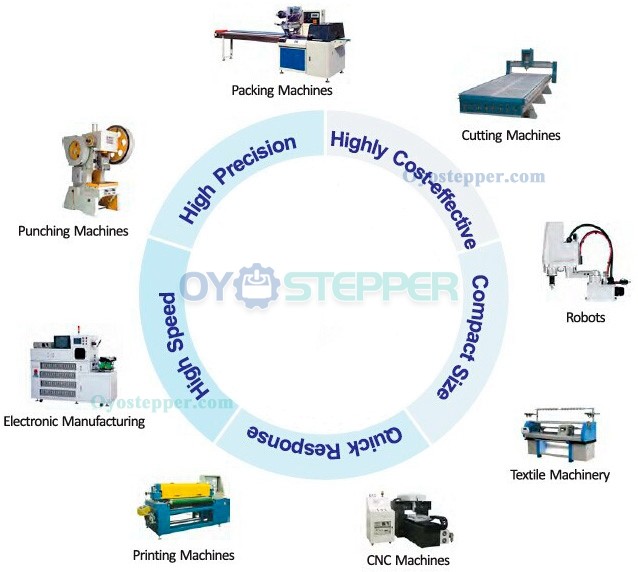.png)
A servo motor is a closed-loop mechanism with a positional feedback
mechanism to control rotational/linear speed & position. An electric
signal controls the motor which regulates movement, specifying the
ultimate command position of an output shaft. It is a self-contained
electrical device, that rotate parts of a machine with high efficiency
and with great precision. The output shaft of this motor can be moved to
a particular angle, position and velocity that a regular motor does not
have.The Servo Motor utilizes a regular motor and couples it with a
sensor for positional feedback.
Types of Servo Motor
Servo motor from china are available in a variety of different sizes and three basic types. They’re defined as the following:
Continuous rotation: Used for hobby applications.
Linear: More suited to complex applications.
Positional rotation: Most commonly used in everyday applications.
Are Servo Motors AC or DC?
The primary difference between AC and DC motors relates to the
electrical currents and the different ways that each current works in
each specific motor type. Let’s have a look at some of the basic
differences between an AC servo and a DC servo.
AC Servo Motors
For most household and domestic applications, the preferred choices are AC servo motors.
AC servos have alternating current (AC) that functions in reverse
order. A transformer device or power supply moves alternative current
across huge distances at high voltages. An AC servo motor can facilitate
changing voltages with greater comfort than a DC servo motor.
DC Servo Motors
DC servo motors contain a direct current (DC) with a positive as well as
a negative current. Unlike the AC servos, the current flows in
precisely the same direction. Current control is far easier than that of
the Ac servo motor because only the armature magnitudes control the
current.
Applications of Servo Motor
It uses in the applications requiring rapid variations in speed without the motor getting overheated.
Industries, they uses in the machine tools, packaging, factory
automation, material handling, printing converting, assembly lines. In
many other demanding applications robotics, CNC machinery or automated
manufacturing.
uses in radio controlled airplanes to control the positioning and movement of elevators.
In robots because of their smooth switching on and off and accurate positioning.
In the aerospace industry to maintain hydraulic fluid in their hydraulic systems.
uses in many radio controlled toys.
used in electronic devices such as DVDs or Blue ray Disc players to extend or replay the disc trays.
used in automobiles to maintain the speed of vehicles;

The servo motor and the advantages of how it works
Above all, the servo drive offers a high level of precision and can actuate and hold defined positions , without losing torque. This enables very fast accelerations and decelerations at certain speeds. The machines or robots driven by the servo motor can therefore implement movements very dynamically and are ideally suitable for complex work.
Servo motors provide good value for many due to comparatively low initial costs, low maintenance costs and a long life. They can therefore also be easily integrated in existing systems.
Source:https://www.oyostepper.com/article-1117-The-Application-of-servo-motor-and-how-it-works.html